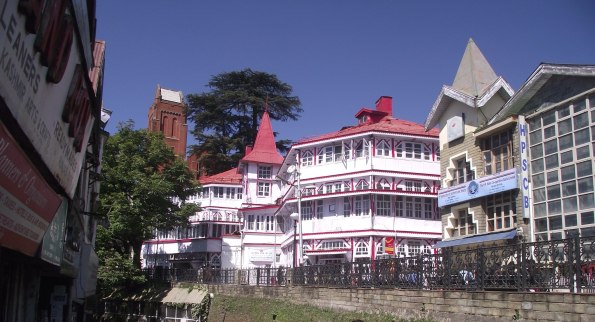Archive
Travel – Review of J.G. Farrell’s, The Hill Station (1981) : Shimla in India
I’ve just finished reading J G Farrell’s half-completed novel, The Hill Station. Farrell, a past Booker prize winner (1973) for The Siege of Krishnapur; recently picked out by UK Broadcaster, Jeremy Paxman as one of the nine books which have made him who he is, calling it a ‘stunning novel’. Farrell died in 1979 aged 44 after being washed away by a freak wave in a beach fishing accident in Ireland.
Between 1970 and 1978, Farrell wrote his Empire Trilogy: Troubles, The Siege of Krishnapur and The Singapore Grip. The Hill Station was supposed to be the final book of a quartet (similar to those of Paul Scott) but remained unfinished due to his untimely death.
Farrell had said in an Observer Magazine article,
‘The really interesting thing that’s happened during my lifetime has been the decline of the British Empire’.
In his writings, an absorbing collection of post-colonial fiction, he explored the economics and ethics of empire doing much to dismantle the staple elements of the British imperial story. This particular story is excellent in pointing up the hypocrisy and double-standards of the Raj, especially in a place like Simla, a cultural pressure cooker which many of those living there found ultimately unbearable.
For me, having visited Shimla (note post-independence name change) in northern India by hill railway from Kalka last year, this book brought back some wonderful memories. For the first three chapters I was back on the train: such marvellous detail and excellent descriptions for the journey up to Kalka; which was then the railhead for Simla. Anyone who’s travelled on a hill train in India will recognise it from this book. The remainder of the journey to Simla in those days was simply punishing. The 58 miles up into the hills were covered by Landau or by Kabul ponies pulling a ‘Tonga’.
The novel evocatively recreates the Simla of the British Raj, something it shares with Kipling’s Kim. If you’ve been to Shimla, you’ll recognise many of the places in the novel although interestingly Farrell never visited. He was due to go there in the autumn of 1979. Sadly, Farrell’s book finishes in mid-stream after just 150 wonderful pages, leaving one feeling bereft and a little short-changed. It ends just as it is getting into its stride but, thankfully, one of the author’s acquaintances has attempted to fill in the gaps and make sense of Farrell’s silence by developing the story further using his detailed research notes.
Not only is the book set in the India of the Victorian era but is one with a fascinating religious theme; the heated 19th century dispute between High Church Ritualism and Low Church Protestantism which led to the Public Worship Regulation Act 1874 (repealed in 1965).
The Hill Station is not kind to institutional Christianity. The Bishop of Simla goes not emerge from this very well, being as he is, more interested in maintaining the party line. However, Revd Kingston, the Anglican ritualist priest cast as the outsider, is given generous treatment by the author on account of the fact that his beliefs are actually central to the way he lives his life.
In the book, the arguments on both sides of this now ancient debate are superbly presented, predominately through the riveting dialogue given to the central characters. The characterisation is strong particularly in the case of the vaguely agnostic Scottish Doctor, McNabb. I loved the underlying tension developed by his longstanding attempt to write a treatise on Indian medicine when all along he was investigating the unexplained effects of religion on the human spirit.
These photographs of Shimla were taken on a visit to India in October 2011. The now fast fading Victorian architecture reflect something of Godalming High Street incongruously set 4,000 miles away in the Shivalik foothills of the Himalayas.









Recent Comments